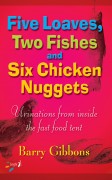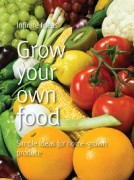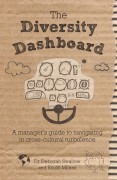Lifestyle
Frankenburger and the great Petri dish experiment
5 August 2013 by Admin in Lifestyle
Scientists have grown a hamburger in a lab by transforming cells into muscle and combining them to make a ‘meat’ patty. The patty, inevitably christened ‘Frankenburger’ by the Daily Mail, among others, was revealed and eaten at a news conference in London today.
Pioneered by scientists in the Netherlands, this new method of growing meat is developing in response to a rising global demand for food, an issue surrounded by questions about sustainable and ethical farming. According to a BBC article, growing beef in this new way uses 45% less energy, creates 96% fewer greenhouse gas emissions and requires 99% less land than traditional beef cattle farming. So it’s easy to see the benefits.
 But these ‘hamburgers’ haven’t made it big yet. To most people the idea of a white, chemically-grown muscle mass dyed red with food colouring and flavoured to make it taste of something is as repugnant as any fast food burger could be. Surely what we really want is food that hasn’t been tampered with – not processed meat padded out with pink slime and sprayed with poisonous chemicals (studies in the US have shown that 70% of processed meat is produced in this way), and not something grown by a twenty-first century Dr Frankenstein using a few cells, a pipette and a Petri dish.
But these ‘hamburgers’ haven’t made it big yet. To most people the idea of a white, chemically-grown muscle mass dyed red with food colouring and flavoured to make it taste of something is as repugnant as any fast food burger could be. Surely what we really want is food that hasn’t been tampered with – not processed meat padded out with pink slime and sprayed with poisonous chemicals (studies in the US have shown that 70% of processed meat is produced in this way), and not something grown by a twenty-first century Dr Frankenstein using a few cells, a pipette and a Petri dish.
The idea of playing with food isn’t new by any means. The first genetically modified crop – a tomato engineered to ripen later than its natural counterparts, went on sale in 1994 (the full implications of GM crops are not yet known but in June this year, the British Environment Secretary declared the health risks of GM farming to be ‘infinitesimally small’). And then of course there’s Dolly the sheep, who made headlines in 1996 having been cloned from a cell ‘as a means of replicating the very best animals with respect to agricultural production’.
Naturally most of us would choose a cruelty-free, environmentally friendly option over the Big Mac driven, mass produced meat many of us are eating right now. But the problems we’re facing are a result of a deeply ingrained Western culture – a thriving food culture based on consumers’ needs for convenience and affordability, and a corporate lust for global domination and a fortune to boot. It’s no wonder that scientists are experimenting with new, weird and wonderful ways to meet demand. The market is there – everywhere, in fact.
 Of course, not everybody agrees that fast food is automatically bad. Some argue that it means that millions every day who would not get a hot meal any other way are fed something filling and relatively cheap. For such an alternative view of fast food read Barry Gibbons’ hilarious Five loaves, two fishes and six chicken nuggets. Gibbons writes with real authority on the subject since he was global CEO of Burger King for five years.
Of course, not everybody agrees that fast food is automatically bad. Some argue that it means that millions every day who would not get a hot meal any other way are fed something filling and relatively cheap. For such an alternative view of fast food read Barry Gibbons’ hilarious Five loaves, two fishes and six chicken nuggets. Gibbons writes with real authority on the subject since he was global CEO of Burger King for five years.
Perhaps we shouldn’t try to replace fast food, but move away from it altogether. One of the most obvious issues associated with the industry is the increasing incidence of weight problems in both adults and children. Children are often encouraged to regard fast food as a treat for behaving well, so it’s no surprise that 22% of four and five year-olds in England are overweight or obese. It’s worthwhile noting here that while more than one billion people worldwide are obese, around the same number will go to bed hungry tonight. Perhaps instead of looking for new ways to industrialise the food industry we should be focusing on farming and distribution models that redress the balance.
Happily, our attitudes are changing – the health risks of fast food are widely known and questions about ethical food are ever-present in the media – this year’s horse meat scandal being just one recent instance. But availability is key, so it’s gratifying to note the increasing visibility of sustainable fishing campaigns such as Hugh’s Fish Fight, and a growing (but yet little) quantity of ‘free range’ and organic produce in supermarkets today.
 Perhaps in the not-too-distant future we will find the time and resources to prepare fresh, healthy food with a minimum amount of locally-sourced meat. We might return to the old days of home-grown or locally farmed produce (we’ve been reading Grow Your Own Food and making the best of this year’s glorious sunshine) … we could even go continental, returning to siesta full-bellied from an hour savouring the specialities of our local café. Or perhaps we’ll all move to Asia, take up Hinduism and live plentifully on a vegetarian diet. If we want the food industry to change it’s up to us as individuals to ensure that we demand better quality food and turn our backs on the pink-slime and Frankenburger salesmen.
Perhaps in the not-too-distant future we will find the time and resources to prepare fresh, healthy food with a minimum amount of locally-sourced meat. We might return to the old days of home-grown or locally farmed produce (we’ve been reading Grow Your Own Food and making the best of this year’s glorious sunshine) … we could even go continental, returning to siesta full-bellied from an hour savouring the specialities of our local café. Or perhaps we’ll all move to Asia, take up Hinduism and live plentifully on a vegetarian diet. If we want the food industry to change it’s up to us as individuals to ensure that we demand better quality food and turn our backs on the pink-slime and Frankenburger salesmen.
Wellness in the workplace: How to keep happy, healthy and wise
5 July 2013 by Admin in Lifestyle
We note with interest yet another recent article in Marketing Week that is relevant to what we’re up to at Infinite Ideas.
Apparently the poor old marketing professional is somewhat under the cosh. 39% of marketing professionals are now working 50+ hours a week. That’s up from 24% two years ago and a national average of 28%.
Cynics could question the validity of such surveys. You wonder how the questions are framed. Might some people not rather exaggerate the hours they put in? Does going to the pub for 4 hours on Friday night with work colleagues count as overtime? But we’ll park the cynicism – there’s no doubt that in these troubled economic times virtually everyone in every sector is having to put the extra hours in just to stand still (except for fat cat bankers – oh, there’s that old leftie again!)
But all these extra hours can have a negative effect on employees. Obviously they see less of their partners and families, but their health can suffer too through stress, lack of exercise and poor diet – to say nothing of over reliance on drink, drugs and cigarettes. Enlightened companies should recognise that they have a duty of care to their employees’ wellbeing.
That’s why we’ve just published The Corporate Wellness Bible with the very wonderful Kate Cook, Wellness expert and all round good woman. Her training as a nutritionist has led to her philosophy that – in addition to good eating – mental attitude, happiness, fitness, time management and sleep are all necessary for a healthy, happy and motivated workforce. And the good news is the advice it offers is easy to put in to practice more or less straight away.
If you’d like some more information then please contact david@infideas.com. He’ll put his bucket of claret down for long enough to send you some details on Kate’s book.
Surviving and thriving in cross-cultural turbulence at work
13 June 2013 by Admin in Business and finance, Lifestyle
Unless you never venture beyond your home town, you’ll know that engaging with a person from a different background, sometimes under unusual and unpredictable circumstances, or in a new environment, requires a certain amount of understanding – or cultural intelligence. Often in life we need to modify our behaviour – our body language, the way we speak or the way we use humour, for example – in order to blend in. In business this understanding can be achieved through cross-cultural training; it’s becoming increasingly important with the intensification of globalisation, as foreign business escalates within corporations and SMEs alike.
As any good manager will know, the absence of cross-cultural intelligence in the workplace can impede productivity, inhibiting performance and preventing organisations from succeeding fully in their chosen markets. If you’re one such manager, you’ll be relieved to know that we’ve just published the antidote to your cultural nightmare. Packed with fun graphics and indispensable advice, The diversity dashboard is a breakthrough quick reference guide that will help you to bridge cultural gaps using practical insights and the clever analogy of a pilot’s cockpit – you need a triple A rating to operate your plane; if you’re struggling to attain your wings and become culturally competent, remember these three As:
- Awareness of your own culture: knowledge about yourself and your core values and how these are expressed in attitudes, behaviours and communication in the workplace;
- Assessment of other cultures: awareness of others and the ability to compare and contrast otherness with various tools and techniques;
- Action: continuing curiosity to learn more, the willingness to adapt and be flexible, and the ability to identify and respond creatively to cultural challenges and conflicts in ways that both respect and engage the other person.
Co-written by intercultural management consultant Dr Deborah Swallow and experienced motivational speaker Eilidh Milnes, this essential guide adopts a fun and realistic approach to a complex, often overlooked subject. We’re delighted that the world’s foremost culture specialist, Fons Trompenaars, seems to agree.
A rich and invaluable resource … precise, accessible advice on handling cross-cultural differences in today’s frenetic business world.
Fons Trompenaars, author of the bestselling Riding the Waves of Culture
Two new gluten-free books
7 May 2013 by Infinite Ideas in Lifestyle
Food and diet writer Kate Santon has written two new gluten-free ebooks, which Infinite Ideas are publishing this month. The books are called Living gluten-free and Gluten-free kids. They’re handy, quick guides if you suffer from coeliac disease or know someone who does.
Living gluten-free by Kate Stanton
Adopting a gluten-free diet is essential if you suffer from coeliac disease. It can solve all sorts of health problems and can be straightforward once you’ve learned a few simple rules of thumb. If you get it right your general health will improve and there are significant energy benefits since as well as avoiding the gluten that makes you unwell you’ll probably be cooking a lot more and avoiding processed foods. To start with you need to understand your condition and Living gluten-free will help you do just that. The book also contains plenty of tips on sourcing and using helpful unfamiliar ingredients, spotting hidden gluten in common grocery items, finding good stuff where you might not expect it (such as supermarket ‘basics’ ranges), and some good but brief recipe ideas as well as golden rules for eating out and entertaining.
Gluten-free kids by Kate Stanton
A gluten-free diet requires real commitment and is a long-term lifestyle change that will affect the whole family. However, it will become much easier with time and the help of the ideas in this little book. Gluten-free kids covers what exactly coeliac disease is and how it affects your child and gives you tips on helping your child understand their condition. The book also explains the importance of making sure that everyone from Grandma to the headteacher is aware of the diagnosis and its implications, suggests ways to cope with potential pitfalls such as peer pressure and teenage rebellion and shows you how to ensure that parties, holidays and family meals remain a pleasure not a chore. By following the advice in this book you’ll avoid the stress and make gluten-free eating a natural part of your family’s life.
What are you looking at?
1 May 2013 by Infinite Ideas in Lifestyle
It’s rare, but when used effectively second-person narration can knock the reader’s socks off. Anybody who read Fighting Fantasy books when they were younger will know the second-person narrative style intimately: ‘You enter the cavern and see a werewolf dead ahead. What will you do?’ This viewpoint is something of an outsider in narrative theory, but when used well it can have a profound effect on your reader. It is ‘you’ at the centre of things, ‘you’ who is now implicated in the story, for better or for worse. Of course, the second person can also be used to express intimacy and companionship, as this book hopefully demonstrates!
 Self-help books aside, you need a good reason to use second-person narrative style in your work. Think about what you are trying to achieve – do you want the reader to feel like a character? Do you want to boss them around, to force them into a certain frame of thought? Do you want to convey the sense of a shared, intimate experience? Or do you want to make the reader complicit in whatever is going on in the text? One striking novel that uses the second person for precisely this last effect is Iain Banks’ Complicity. Several of the chapters involve ‘you’ as the protagonist. Although it’s not immediately clear what you are doing, you soon realise that ‘you’ are a serial killer, and you’re forced to witness – commit, even – several horrific murders from a very intimate, and unsettling, viewpoint.
Self-help books aside, you need a good reason to use second-person narrative style in your work. Think about what you are trying to achieve – do you want the reader to feel like a character? Do you want to boss them around, to force them into a certain frame of thought? Do you want to convey the sense of a shared, intimate experience? Or do you want to make the reader complicit in whatever is going on in the text? One striking novel that uses the second person for precisely this last effect is Iain Banks’ Complicity. Several of the chapters involve ‘you’ as the protagonist. Although it’s not immediately clear what you are doing, you soon realise that ‘you’ are a serial killer, and you’re forced to witness – commit, even – several horrific murders from a very intimate, and unsettling, viewpoint.
This feels like you’re behind the eyes of a killer. Whereas with a more conventional form of narrative you could distance yourself from the events, here you literally are complicit with them. Like it or not, you become the character and have to sit with a puppet-like empathy as you maraud your way through your victims. On a less disturbing level, the second person works to make reading the text as strange an experience as possible. People aren’t generally used to being addressed in a work of fiction. By doing so, you are creating an intimate bond with each reader, allowing them to take the front seat in your imaginary world. Used well, and your work will really stand out from the crowd. Used without good reason, though, or written sloppily and all it will do is confuse and alienate people.
Writing an entire text in the second person is an ambitious, and some might say foolhardy, undertaking, but there’s nothing to stop you addressing the reader every now and again. Back in the good old days when the novel was a relatively new phenomenon, narrators often made conversational asides to the reader. And whilst not as common today, the narrator can still throw in an occasional comment or two directed at ‘you’, just to make sure you’re still awake.
If you’re writing in a first-person viewpoint, especially one confessional in tone, this seems perfectly normal – just look at D. B. C. Pierre’s Vernon God Little. If you’re writing with a third-person narrator, however, addressing your readers explicitly may direct their attention away from the events of the text and towards its construction. All of a sudden, this disembodied, neutral observer has developed an opinion, and is talking to you like you’re its best friend.
If you want an example of how second-person narration is used to excellent effect, read Italo Calvino’s If On a Winter’s Night a Traveller. Here, the narrator begins the tale by instructing you, the reader, to lie down, relax with the book, and tell your friends not to interrupt your reading – almost like an instruction manual for enjoying the book. It alerts you to the novel’s artifice, but it also creates a welcome sense of intimacy between the narrator and the reader.
How To Lose Weight
22 April 2013 by Infinite Ideas in Lifestyle
Master the art of goal-setting to turn your dream of losing weight into reality. Most of us don’t do it, but planning really works!
A well-known study of a group of US students in the 1950s found that only three per cent of the graduates wrote a set of goals for their lives.
A follow-up survey some twenty years later discovered that the goal-setting students were worth more financially than the other 97% put together. You may say, well, life’s not all about money. No, it’s not – but the goal setters were also healthier and happier in their relationships than the others.
Goal-setting is as relevant to weight loss as it is to life plans, but it’s not always as straightforward as it seems. Simply saying ‘I want to lose weight’ may well be true and seem to be a goal, but it won’t get you very far. Why? Because goals need to be SMART: that’s Specific, Measurable, Attainable, Realistic and Time-framed. Put simply, by analysing how to reach your end goal, you increase your chances of achieving it.
OK, let’s do it. Get some paper and a pen and start writing.
 Be Specific – Write down how much weight you want to lose. Is there also a particular reason you want to lose this amount, for a special occasion, or is it for health reasons? Perhaps you’ve always been overweight and really want to do something about it. It’s important to think around the reasons you want to slim down as part of the ‘why’ of your goal. Once it’s clear in your head, you’ll be in control and focused.
Be Specific – Write down how much weight you want to lose. Is there also a particular reason you want to lose this amount, for a special occasion, or is it for health reasons? Perhaps you’ve always been overweight and really want to do something about it. It’s important to think around the reasons you want to slim down as part of the ‘why’ of your goal. Once it’s clear in your head, you’ll be in control and focused.
Measurable – How will you measure you weight loss? By weighing yourself regularly or by dropping a clothing size? Or will you just go by the way you look or feel? How often will you take stock of your achievements? There’s no right or wrong answer here – it’s just about what works for you.
Attainable – Question yourself as to whether this goal is really what you want. You could think about it in terms of your commitment and enthusiasm. If you’re not 100% happy about your goal, maybe you need to revisit the specifics to review whether it is too ambitious or too challenging for you to feel confident about it. A goal does have to stretch you, but if it seems unattainable you’ll become downhearted pretty quickly. Of course, we all have different definitions of what’s attainable and what isn’t – it depends on factors such as your personality, confidence and experience.
Realistic – With the best will in the world, if you are 165 cm (5 ft 5 in) and pear-shaped, no diet is going to turn you into Aussie model/actress/business woman Elle McPherson – especially if you’re a man! Make sure your goal is realistic. Think about your goal in terms of being the best you can be.
Time-framed – A time frame keeps your goal on track. Set a start point, such as ‘I will start my healthy eating weight loss plan on Thursday’ and give yourself an end time too, such as ‘I will lose five kilos by my summer holiday.’ I think it also makes sense to include a couple of time frames in your overall goal representing short and longer term achievements. This helps with motivation. So you could add ‘I will start exercising three times a week on Mondays, Wednesdays and Saturdays from next week’ and so on. Use positive goal-getting language when writing down what you’re going to achieve. There’s no room here for ‘might’ and ‘ought to’.
By now your goal should be looking so clear that you can reach out and touch it. I hope you feel all revved up and ready to go. One other thing: do remember to congratulate yourself every step of the way, whether it is with little (non-fattening) rewards or simply a mental pat on the back.

